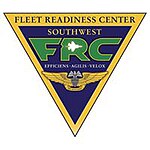Naval Air Station North Island

Naval Air Station North Island or NAS North Island (IATA: NZY, ICAO: KNZY, FAA LID: NZY), at the north end of the Coronado peninsula on San Diego Bay in San Diego, California, is part of the largest aerospace-industrial complex in the United States Navy – Naval Base Coronado (NBC), and the home port of several aircraft carriers of the United States Navy. The commanding officer of NAS North Island (NASNI) is also the Commanding Officer, Naval Base Coronado (NBC). As such, he or she commands or administers NASNI and seven other naval facilities: Naval Amphibious Base Coronado (NABC); Outlying Field Imperial Beach; Silver Strand Training Complex; Remote Training Site, Warner Springs; Mountain Warfare Training Camp Michael Monsoor; Camp Morena; and Naval Auxiliary Landing Facility San Clemente Island. NBC, with only its commands in the metropolitan San Diego area, brackets the city of Coronado from the entrance to San Diego Bay to the Mexican border. NAS North Island itself is host to 23 aviation squadrons and 80 additional tenant commands and activities—one of which, the Fleet Readiness Center Southwest, is San Diego's largest aerospace employer.
Excerpt from the Wikipedia article Naval Air Station North Island (License: CC BY-SA 3.0, Authors, Images).Naval Air Station North Island
Rogers Road,
Geographical coordinates (GPS) Address External links Nearby Places Show on map
Geographical coordinates (GPS)
| Latitude | Longitude |
|---|---|
| N 32.699166666667 ° | E -117.21527777778 ° |
Address
North Island Naval Air Station (Halsey Field)
Rogers Road
92135
California, United States
Open on Google Maps








